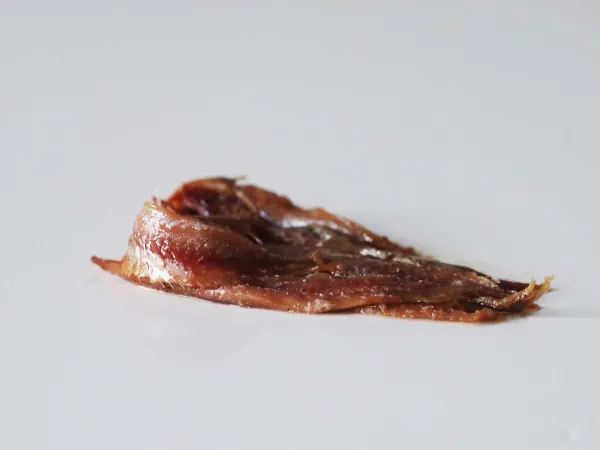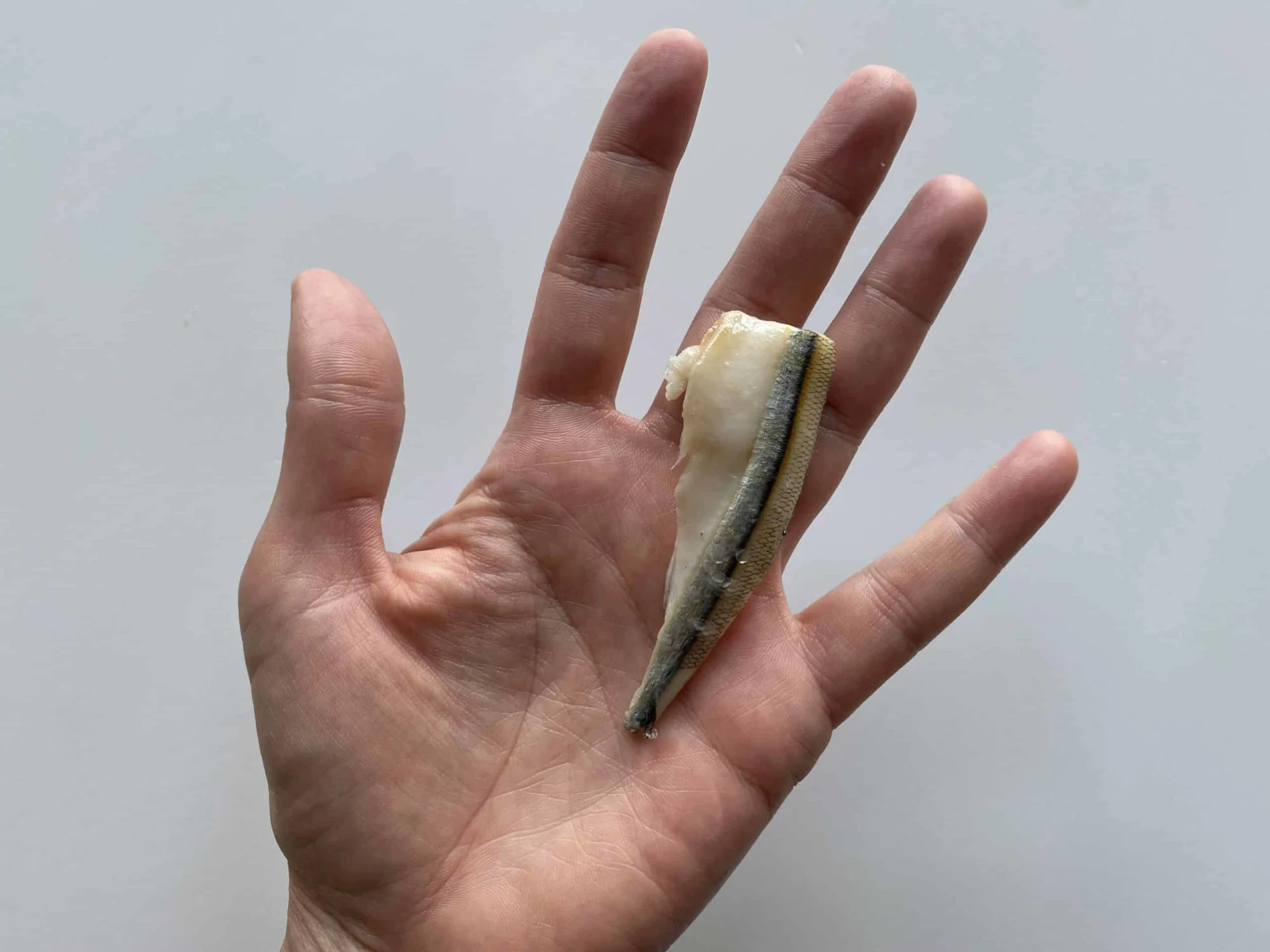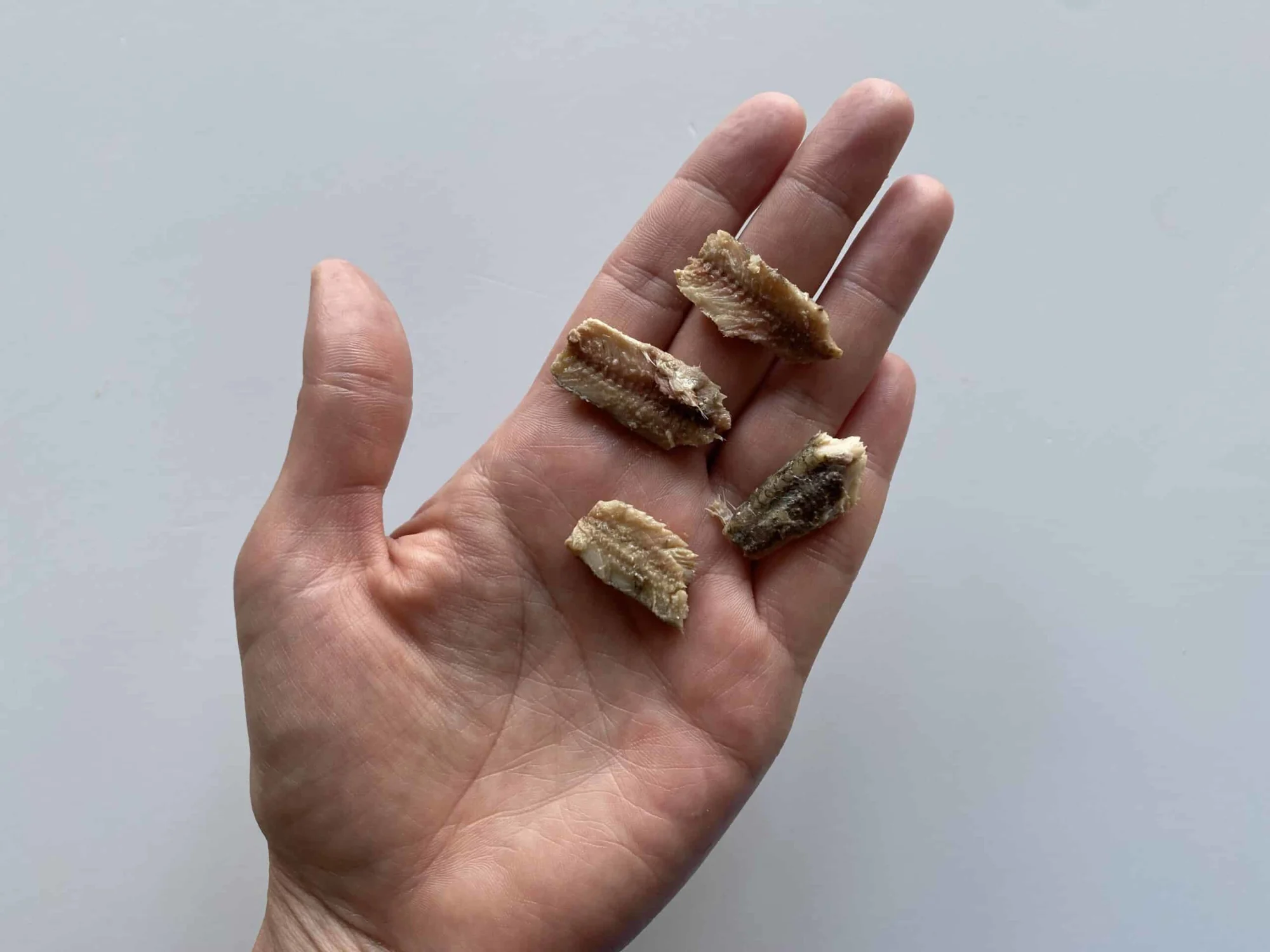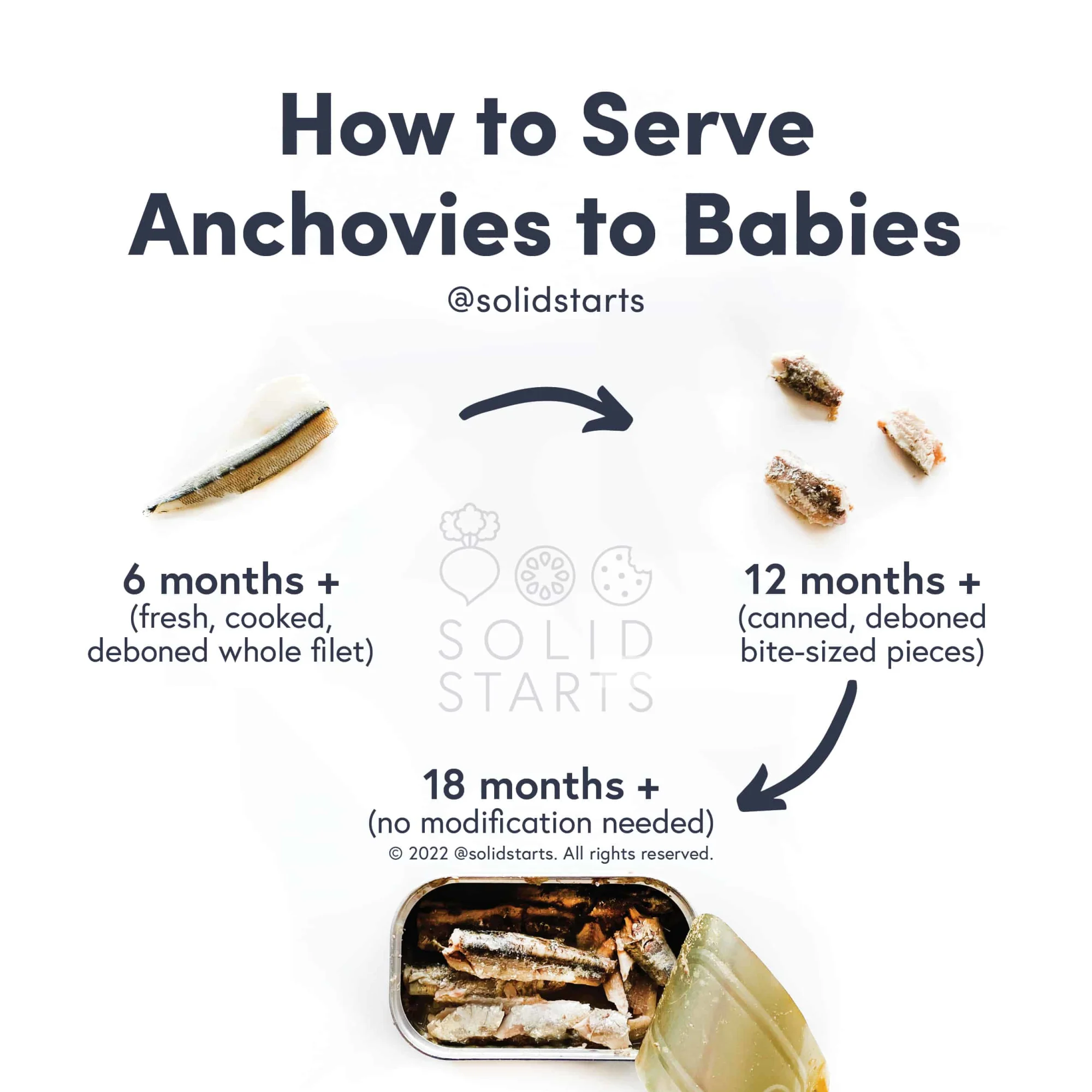Anchovy
Fish (Finned)
Age Suggestion
6 months
Iron-Rich
Yes
Common Allergen
Yes

When can babies have anchovies?
Anchovies, when cooked, may be introduced as soon as baby is ready to start solids, which is generally around 6 months of age. Compared with other fish, anchovies tend to be low in mercury.
Anchovies are small fish that provide a vital food source for humans and oceanic creatures alike. There are more than 140 species around the world—from the Atlantic and Pacific Oceans, to the Black and Mediterranean Seas. For centuries, diverse cultures have eaten fresh anchovies as a delicacy. Preserved anchovies are often packed in salt, which leaches liquid from the anchovy and infuses the fish with rich, savory flavor.
Are anchovies healthy for babies?
Yes. Anchovies are low in mercury and packed with protein and fat, in addition to many essential micronutrients for baby’s development. They also contain calcium, iron, zinc, and choline, as well as vitamins B6, B12, and E. Plus, they’re an excellent source of omega-3 fatty acids, particularly DHA, which is critical for visual and cognitive development. Together, these nutrients provide the building blocks needed for growth and development, in addition to supporting the health of baby’s bones, red blood cells, immunity, brain, metabolism, bodily resilience, and more.
Many kinds of preserved anchovies are high in sodium. While a taste is okay, consider waiting to regularly share preserved anchovies until baby is older. Research has found that offering food that is high in salt can take up space in the belly and, as a result, decrease a child’s motivation to try other food. One way to be mindful of sodium is to opt for anchovies packed in oil or water (not brine) when they are available.
Is anchovy a common allergen?
Yes. Finned fish are classified as a Global Priority Allergen by the World Health Organization. It’s estimated that only 0.2% of people are allergic to finned fish worldwide, and the prevalence of fish allergies in children, while variable, is even less than in adults. About 40% of people with finned fish allergies don’t experience their first allergic reaction until adulthood. Unfortunately, most individuals who are allergic to finned fish do not outgrow the allergy.
Some individuals with finned fish allergy may react from inhaling proteins that become aerosolized when cooking fish. If this is the case for baby, you may wish to avoid cooking fish in the household when baby is present.
Around 50% of individuals with one finned fish allergy will react to another fish as well. This is because the major allergen in finned fish, beta-parvalbumin, is present in most fish, regardless of species. Due to cross-contamination and mislabeling of fish, allergists often recommend that those allergic to one species of finned fish avoid all finned fish until meeting with an allergist to determine which fish might be safely introduced into the diet. This is an individualized recommendation, so be sure to confirm with your allergist before offering other finned fish if baby is allergic to anchovy.
Finned fish are a known trigger of food protein-induced enterocolitis syndrome, also known as FPIES. FPIES is a delayed allergy to food protein which causes the sudden onset of repetitive vomiting and diarrhea to begin a few hours after ingestion. Left untreated, the reaction can result in significant dehydration. Unlike other food allergens, FPIES to finned fish may not present until later in life, and tends to be life-long.
Lastly, a note on scombroid poisoning, which is sometimes mistaken for a fish allergy. Scombroid poisoning is a type of food poisoning that occurs when someone eats fish that has been improperly refrigerated. This allows a large amount of histamine to build up in the fish. When consumed, this large load of histamine can cause symptoms that mimic those of an allergic reaction, causing some people to believe that they have developed a finned fish allergy, even if they are not allergic. Ensuring that fish has been stored at adequately cool temperatures can minimize the risk of such a reaction.
If you suspect baby may be allergic to fish, make an appointment with an allergist before introducing anchovy. As with all common allergens, introduce anchovy in small amounts and watch closely as baby eats to see if any adverse reaction occurs. If all goes well, gradually increase the serving size over time. Once common food allergens are successfully introduced, it is recommended to keep them in the diet regularly (twice weekly, if possible). However, this doesn’t mean that each different fish species must be offered multiple times a week. Finned fish share the same major proteins, so it is perfectly acceptable to rotate finned fish varieties according to availability and preference.
Are anchovies a choking hazard for babies?
No, preserved anchovy typically presents a low choking risk, although the bones in fresh anchovy are a choking hazard. The edible bones in preserved anchovies have been softened by the canning process and do not need to be removed before serving. However, bones in fresh anchovy need to be carefully removed before serving. To reduce choking risk, prepare and serve anchovies in an age-appropriate way. As always, make sure to create a safe eating environment and stay within an arm’s reach of baby at mealtime. For more information on choking, visit our sections on gagging and choking and familiarize yourself with the list of common choking hazards.
Learn the signs of choking and gagging and more about choking first aid in our free guides, Infant Rescue and Toddler Rescue.
How do you serve anchovies to babies?
Every baby develops on their own timeline, and the suggestions on how to cut or prepare particular foods are generalizations for a broad audience.
6 months old +:
Offer preserved anchovy on its own, mixed into sauce, or mashed into grains, vegetables, or yogurt. The majority of preserved anchovies are well-cooked, and there is no need to remove the skin and bones; the packaging process softens the bones and skin to a point where they are easily mashed as baby munches. If you happen to have access to fresh anchovies, make sure that they are well-cooked and bones are removed before offering them to baby.
9 months old +:
Offer a whole preserved anchovy or break it into bite-sized pieces for baby to practice picking up with their developing pincer grasp. Alternatively, continue to use preserved anchovy to flavor dishes to share with baby like cooked vegetables, pasta sauce, and roasted meats. There is no need to remove the bones and skin of preserved anchovies; the majority of preserved anchovies are well-cooked and the packaging process softens the bones and skin to a point where they are easily mashed as baby munches. If you happen to have access to fresh anchovies, make sure that they are well-cooked and bones are removed before offering them to baby.
12 months old +:
Continue to offer a whole preserved anchovy or break it into bite-sized pieces and offer to the child along with a fork for utensil practice.


Introducing common allergens to babies can be scary. We have a First 100 Days plan that walks you through exactly when to introduce each one with the right amount of time between them.
Written by
Expert Tips Delivered to Your Inbox
Sign up for weekly tips, recipes and more!
The content offered on SolidStarts.com is for informational purposes only. Solidstarts is not engaged in rendering professional advice, whether medical or otherwise, to individual users or their children or families. No content on this site, regardless of date, should ever be used as a substitute for direct medical advice from your doctor or your medical or health professional, nutritionist, or expert in pediatric feeding and eating. By accessing the content on SolidStarts.com, you acknowledge and agree that you are accepting the responsibility for your child’s health and well-being. In return for providing you with an array of content “baby-led weaning” information, you waive any claims that you or your child may have as a result of utilizing the content on SolidStarts.com.






